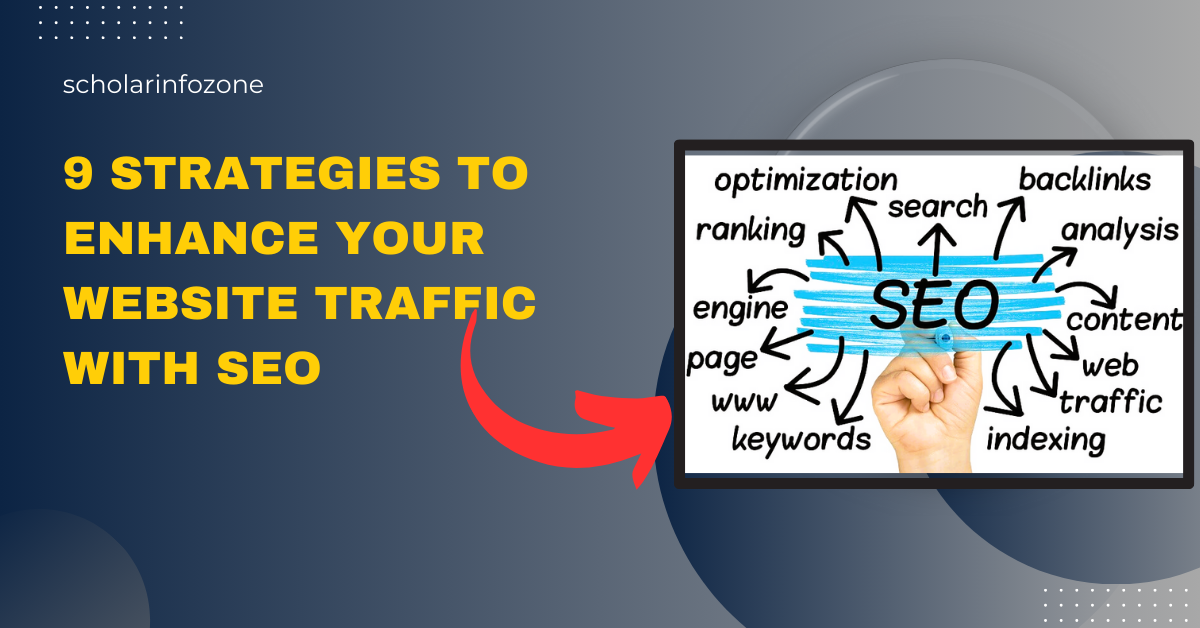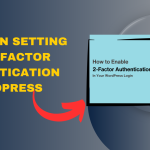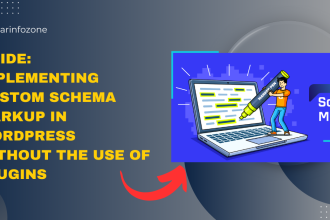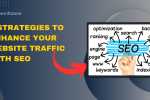Over the years, the landscape of search engine optimization (SEO) has evolved into a more intricate practice that goes beyond simply using keywords. Google and other search engines have implemented various enhancements in their ranking algorithms to offer users more relevant results and improve click-through rates for advertisers.
While the foundation of SEO still lies in optimizing your website and producing high-quality content, other critical factors like keyword intent, site structure, and link-building strategies must now be taken into account.
Below, we delve into some of these techniques in detail to empower you to implement them effectively.
1. Focus on Driving Organic Search Traffic
Harnessing organic search traffic is a top strategy for increasing website traffic, and there are specific tactics you can deploy to maximize its impact. To attract more visitors to your site, it is essential to understand the keywords that resonate with your target audience. Conduct thorough keyword research using tools such as Google Trends or the Keyword Planner within Google Search Console.
Once you have identified the relevant keywords people are searching for, create content that addresses their queries and delivers value. This approach can elevate your position on search engine results pages (SERPs) and enhance your website visibility to potential users. When a user searches “How can I create chocolate chip cookies without eggs?” on Google and selects one of the top search results with this query, they will discover an article detailing the steps to baking delicious cookies without the use of eggs. This leads to an increase in traffic from engaged consumers seeking answers online, a crucial aspect of successful SEO strategies! To improve your search engine ranking and attract more organic traffic, it is essential to create compelling and valuable content that addresses people’s inquiries using natural language. This entails incorporating keywords strategically throughout your content to ensure it is easily understood by both humans and search engine algorithms!
2. Utilize Extended Keywords Aligned with Search Intent
For effective SEO strategies, utilizing long-tail keywords is key. These longer and more specific search phrases are more likely to drive conversions, easier to rank for, and cost less compared to shorter, more general keyword terms. Long-tail keywords have lower competition levels, allowing for higher visibility on the SERPs (search engine results page), often resulting in increased click-through rates (CTRs) and conversion rates.
3. Optimize to Reach Position Zero
Securing position zero means attaining the top position on the first page of search results, making it a highly sought-after achievement. This prime spot ensures that your product or service will be among the first results users encounter. While achieving Position Zero demands advanced SEO expertise, the benefits make the effort worthwhile!
4. Create Purposeful Content
While many businesses prioritize delivering exceptional customer service, it’s essential to recognize the role of SEO in driving website traffic. To improve search result rankings and attract more organic traffic, focus on crafting compelling and informative content that addresses users’ queries in a natural language. This entails judiciously incorporating relevant keywords to ensure readability and search engine visibility.
5. Utilize Consistent Branding in Your Website and Backlinks
Establishing a strong brand presence is crucial for effective SEO. Consistent branding helps in brand recognition, recall, and trust among your audience. However, maintaining uniform branding across all platforms can be challenging, requiring both time and financial investment. Any missteps in your online branding strategy can be complex to rectify.
Internal backlinking is an effective method to drive more traffic from existing visitors and enhance your domain authority.
6. Enhance Click-Through Rate (CTR) with Optimized Content
Boost your click-through rate by optimizing your content with relevant keywords in page titles, headings, and body text. It’s crucial to incorporate target keywords within the first and last 100 words of your content. Additionally, include these keywords in URLs, meta descriptions, image alt text, and captions. Utilize targeted keywords in image file names and anchor text for internal links.
7. Utilize Structured Data Markup
Structured data markup serves as a method to annotate your website with valuable information to inform Google about your site’s content. This markup provides additional details regarding your website’s pages, including the title, description, author information, and other specifics that aid search engines in accurately understanding your website.
Implementing structured data makes it simpler for search engine algorithms to navigate the content in your website’s sitemap, especially for sites with substantial content volumes. It enables you to furnish crucial data like author ranking, language, country targeting, etc., which can only be accomplished through structured data markup.
By utilizing structured data markup, Google’s crawlers can interpret the relationships between the pages within your website more efficiently by examining the schemas defined within those pages, rather than requiring manual updates each time anything changes. This approach streamlines the process, making it easier to maintain consistency. You can effortlessly generate these schema markups using an online schema markup generator.
Below are some common structure data markups:
-
Article schema
-
FAQ Schema
-
Job posting schema
-
How to schema
-
Video schema
-
Star rating
-
Product
-
Person
-
Website
-
Breadcrumbs
8. Develop Specialized Landing Pages for Your Target Keywords
If you’re pondering how to create a landing page for each keyword, here’s a straightforward process:
Start by crafting a new webpage and integrating the keyword into the title, meta description, and content body. Incorporate the keyword into the URL to enhance your SEO ranking effortlessly.
Be sure to include it within the alt attribute of images on your website as well! By doing so, when users search for keywords related to your products/services, their search results will display links to pages containing relevant information on those topics, potentially increasing traffic. Additionally, it is crucial to incorporate relevant phrases from your content into H1 tags for easy detection by search engines like Google and Bing as they scan online content.
9. Utilize Online Directories and Local Business Listings
The significance of being listed on Google My Business:
Google My Business provides a platform to verify your business address, upload photos, specify hours, expertise, and more. You can also claim ownership via Google Maps if already claimed by another entity, ensuring exclusive control over future edits.
To understand how to create a business listing on Google My Business, follow this link.
Conclusion
In summary, optimize your title and meta description, tailor content for feature snippets, implement appropriate schema markups, utilize long-tail keywords, and establish effective internal and external linking to enhance website traffic through SEO strategies.






